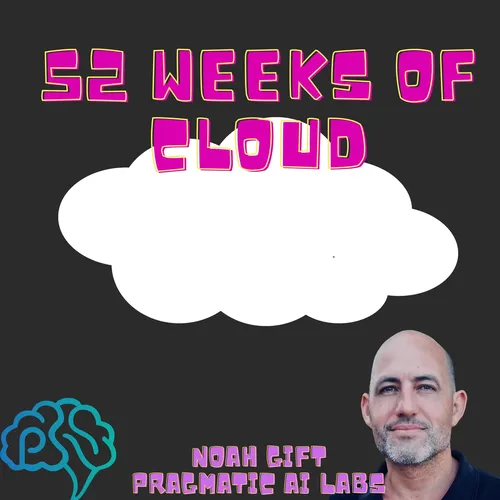OpenAI Red Flags Common to FTX, Theranos, Enron and WeWork
- Author
- Pragmatic AI Labs
- Published
- Tue 28 Jan 2025
- Episode Link
- podcast.paiml.com
Podcast Episode Notes: Red Flags in Tech Fraud – Historical Cases & OpenAI
Summary
This episode explores common red flags in high-profile tech fraud cases (Theranos, FTX, Enron) and examines whether similar patterns could apply to OpenAI. While no fraud is proven, these observations highlight risks worth scrutinizing.
Key Red Flags & Historical Parallels
🚩 Unverifiable Claims
- Theranos: Elizabeth Holmes’ claims about “one drop of blood” diagnostics were never independently validated.
- OpenAI: Claims about AGI (Artificial General Intelligence) being “imminent” lack third-party verification. Critics argue OpenAI redefined AGI as “$100B in profit,” a misleading pivot.
“AGI and $100B in profit… those two words don’t have any relation to each other.”
🚩 Test Manipulation
- Theranos: Faked blood test results using external labs while claiming proprietary tech.
- OpenAI: Questions about benchmarks like Frontier Math, a nonprofit funded by OpenAI. Is performance data being gamed without independent oversight?
🚩 Employee Exits & Whistleblower Cases
- FTX/Theranos/Enron: Mass exits and whistleblowers preceded collapses.
- OpenAI: High-profile safety researchers have departed. An open whistleblower case involves an unexplained death (under investigation).
🚩 IP Theft Lawsuits
- Theranos: Faced lawsuits over stolen intellectual property.
- OpenAI: NY Times lawsuit alleges unauthorized use of copyrighted training data. Scrutiny grows over data sourcing practices.
🚩 Structural Changes
- FTX/WeWork: Opaque corporate restructuring masked risks.
- OpenAI: Shift from nonprofit to for-profit (capped-profit LP) raises questions. How does Microsoft’s stake impact governance and transparency?
🚩 Whistleblower Suppression
- Theranos: Whistleblowers faced legal threats and familial pressure.
- OpenAI: NDAs and legal actions reportedly silence critics. A deceased whistleblower’s case remains unresolved.
🚩 Excess Secrecy
- Enron/FTX: Hidden financial schemes and tech failures.
- OpenAI: Core AI models are proprietary, yet open-source rivals (e.g., Chinese firms) claim comparable results with minimal funding.
“A random Chinese company… built something better for $5M. Is OpenAI worth $157B?”
🚩 Regulatory Evasion
- Theranos/FTX: Avoided FDA/SEC oversight via loopholes.
- OpenAI: Lobbies governments to shape AI regulations, potentially avoiding stricter rules.
🚩 Valuation Concerns
- FTX: Collapsed after $32B valuation proved inflated.
- OpenAI: $157B valuation clashes with low-cost competitors. Could replication by smaller players destabilize its market position?
Closing Thoughts
While OpenAI’s innovations are groundbreaking, historical precedents remind us to critically assess:
- Lack of independent verification
- Opaque governance
- Rapid valuation growth amid legal/ethical risks
Caution: These are observational parallels, not accusations. Time will reveal whether these red flags signify smoke—or just noise.
Further Reading/References
- Theranos Fraud Case (SEC)
- NY Times vs. OpenAI Lawsuit
- TechCrunch: “OpenAI’s Frontier Math & Nonprofit Ties” (2023)
- “Bad Blood” (Theranos) by John Carreyrou
🔥 Hot Course Offers:
- 🤖 Master GenAI Engineering - Build Production AI Systems
- 🦀 Learn Professional Rust - Industry-Grade Development
- 📊 AWS AI & Analytics - Scale Your ML in Cloud
- ⚡ Production GenAI on AWS - Deploy at Enterprise Scale
- 🛠️ Rust DevOps Mastery - Automate Everything
🚀 Level Up Your Career:
- 💼 Production ML Program - Complete MLOps & Cloud Mastery
- 🎯 Start Learning Now - Fast-Track Your ML Career
- 🏢 Trusted by Fortune 500 Teams
Learn end-to-end ML engineering from industry veterans at PAIML.COM
